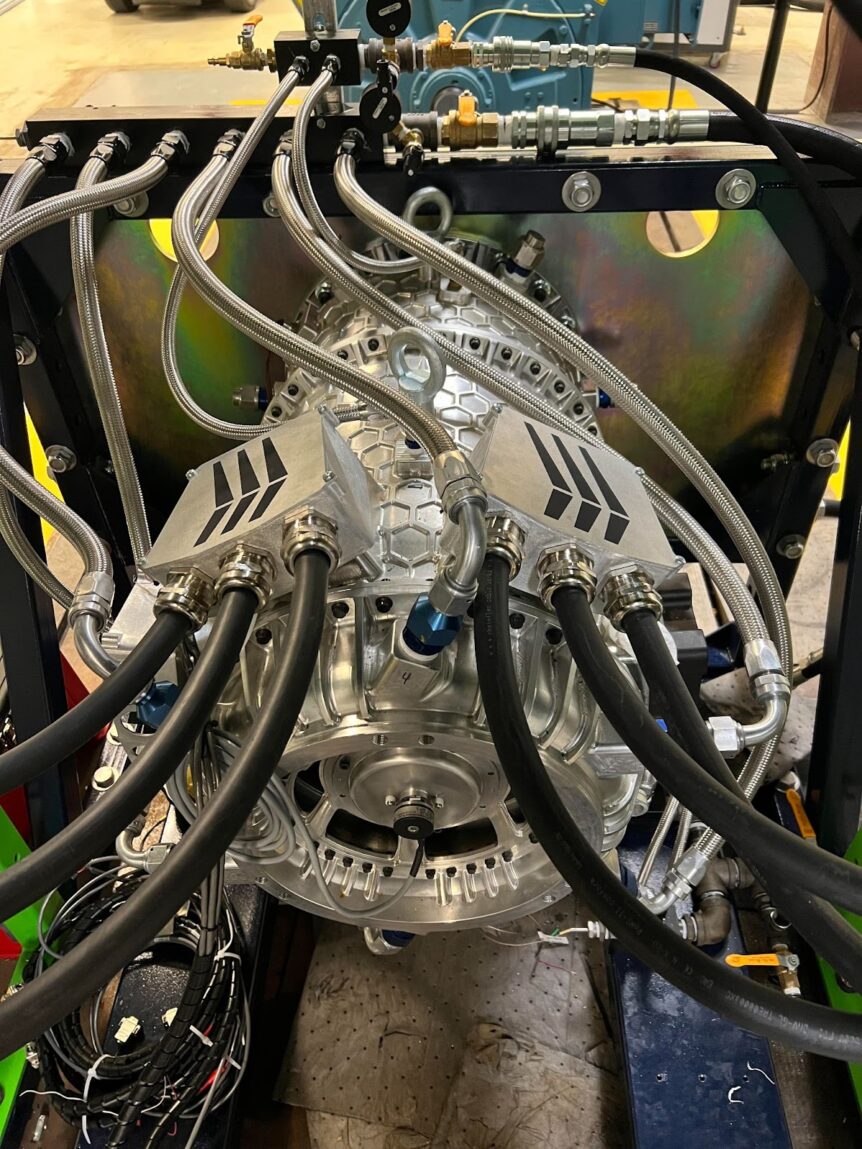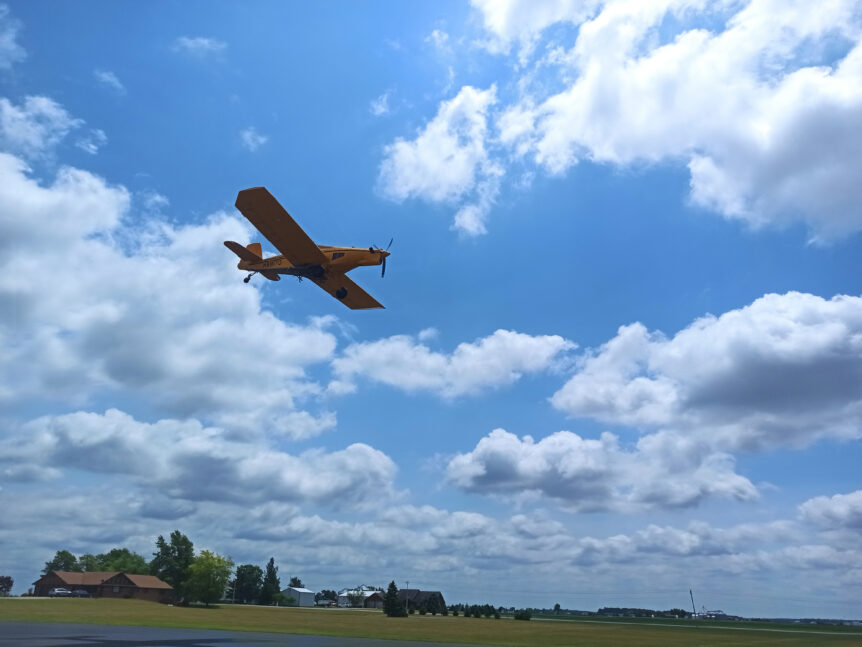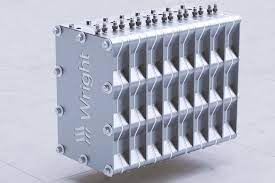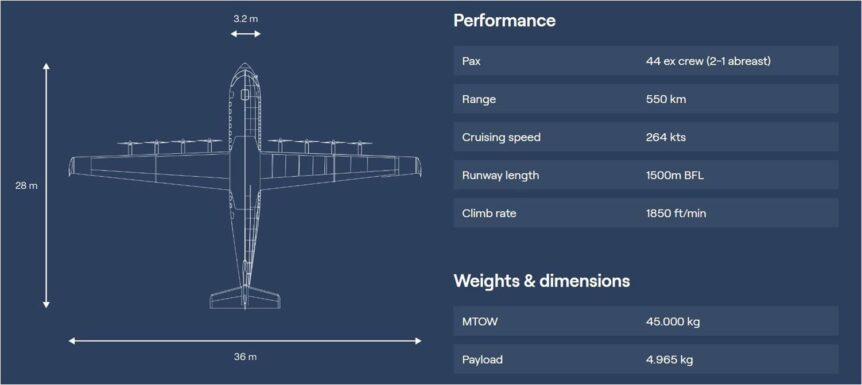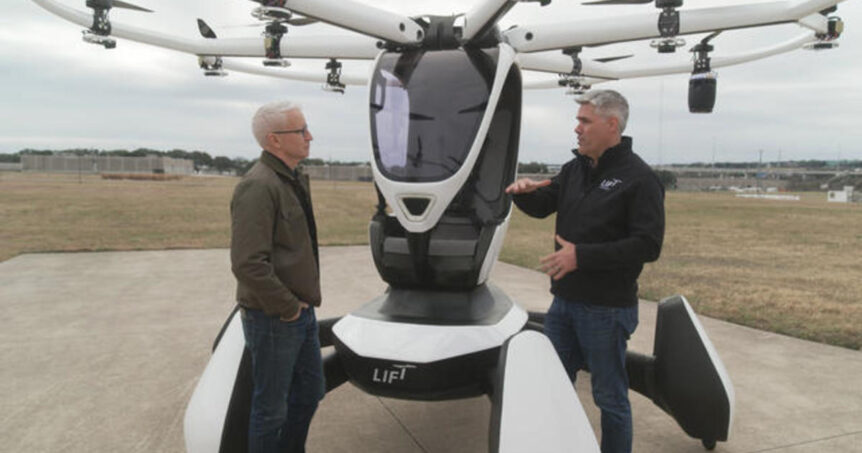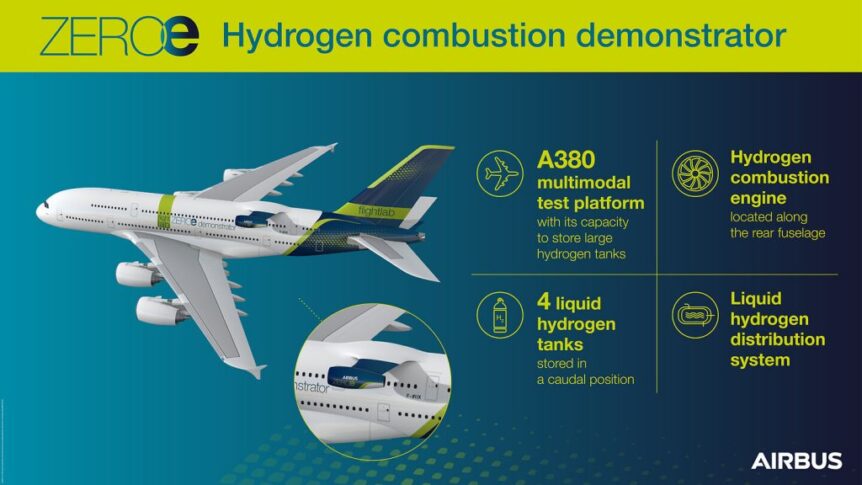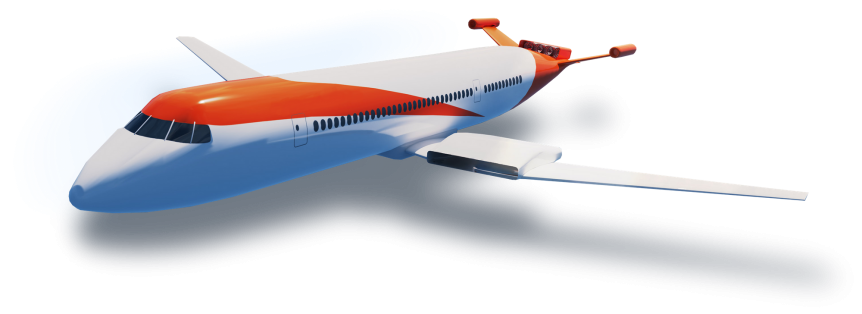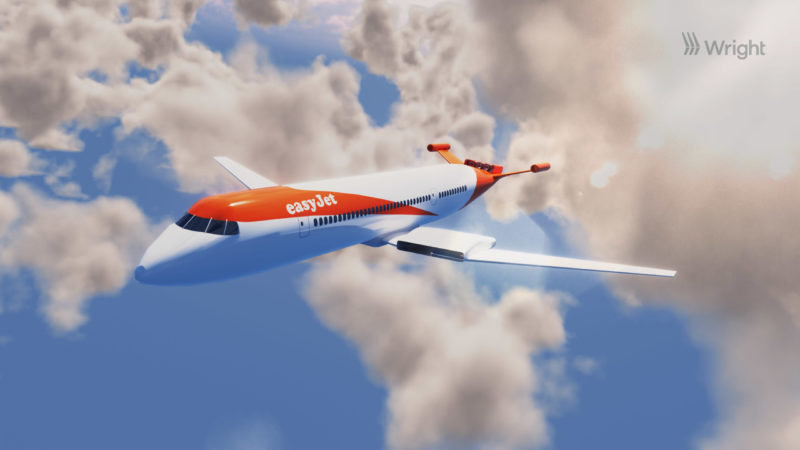Wright Electric, testing its 1.2 megawatt motor, has passed partial discharge tests, a significant achievement in high-altitude safety. The company explained the results and their importance in a press release. ”Wright Electric Announces Successful Partial Discharge Testing on our Motor” “We are pleased to share a significant achievement in our ongoing pursuit of decarbonizing the industries that are hardest to decarbonize. Wright Electric proudly announces the successful completion of an altitude simulation test conducted in the Wright Lab, showcasing our 2 megawatt motor’s robust performance at a simulated atmosphere equivalent to 43,000 feet without experiencing Partial Discharge (PD).” Jeffrey Engler, founder and CEO of Wright Electric, explains in the press release, “Partial discharge is a form of electrical failure where electric charge escapes through tiny voids in apparently solid insulation. When partial discharges occur they can degrade the insulation and create a risk of fire in the motor. PD becomes more likely at high altitudes due to thinning of the …
Wright Electric Goes Agricultural
Following its announcement of a range of battery packs last month, Wright Electric shares information about its one-megawatt motor powering an Embraer agricultural airplane. Teaming with Axter Aerospace, a Spanish firm with a history of providing backup electric power for otherwise conventionally powered aircraft; Wright helps make crop dusting a safer enterprise. This eight-year-old video shows Axter’s early efforts with a small Tecnam aircraft. (Note: you might want to turn on the closed captioning.) Low-level flying necessary for dusting or spraying crops requires utter reliability, so a proven turbine backed up by a high-power electric motor seems like an ideal combination for those circumstances. The combined power of 800 kilowatts (1,072 horsepower) allows carriage of a large payload, sufficient power to avoid obstacles, and redundancy to prevent sudden letdowns. The electric motor has been tested to 1.2 kilowatts (1,608 horsepower), so could provide adequate power even if the turbine failed. Failure of either power source is highly unlikely in any …
The Wright Battery Program
Jeff Engler of Wright Electric wants it all. He wants lightweight, high-power electric motors and inverters to control them. He wants lightweight generators and now lightweight, high energy density batteries to store that electricity. He wants to meet the goal that, “By 2040, Wright will eliminate carbon emissions from all flights under 800 miles.” A more recent iteration of the company’s web site includes the goal of “Decarbonizing the industries that are hardest to decarbonize.” These would seem heady ideals but Wright Electric seems to be making steady progress toward fulfilling those goals. The Motor Their motor has been tested to 1,000 kilowatts (1,340 horsepower), with expectations that it could reach 2,000 kW (2,680 hp.). According to Aviation Week, “The motor produced 1 megawatt of peak power on a dynamometer test stand at Wright’s facility in Albany, New York. The company has signed a Space Act Agreement with NASA to test the motor in an altitude chamber at the NASA …
Delft’s Maeve 01 Dreams Big
The Maeve 01 is the latest big dream from The Netherlands’ Delft Technical University – which seems to be a resource-rich aeronautical community producing myriad flying machines. The airplane comes with a novel recharging system, the Maeve ReCharge network – all to provide “Aviation for a generation that wants to travel, not pollute.” The eight motors spanning its high-aspect ratio wings could be replaced by six, but that depends on replacing the eight 1.2 megawatt (1609 hp.) motors with 1.5 megawatt (2,012 hp.) units. This seems plausible, since Jeff Engler’s Wright Electric has recently tested a 2 megawatt (2,682 hp.) motor and ZeroAvia plans on delivering 2 MW units to retrofit DeHavilland Dash 8s within the next few years. One possible downside would be having less of the 36-meter (118.1 foot) wing swept by the propellers. Maeve founder Jan Willem Heinen explains the eight motors and their possible replacement by six more powerful units. “The reason why we went for …
Sky Taxis, Eviation Featured on TV News
60 Minutes and The Today Show have recently featured sky taxis and future electric airliners on their broadcasts. This is big news in that such transport is getting recognition in popular media, and even somewhat of a fair hearing. Even though references to the Jetsons are common in such reports, both these excursions seemed to be less wide-eyed, biased, and skeptical than most. Lift Hexa Although LIFT’s Hexa is featured prominently in publicity for the show, Wisk’s CEO is featured in this promotional piece. “We’re excited to share that we’ll be on this weekend’s episode of @60Minutes on @cbstv! Be sure to tune in as our CEO, Gary Gysin, sits down with @AndersonCooper to talk about the future of #mobility!” LIFT had a say in promoting the show. “Sitting in bumper-to-bumper traffic during rush hour is one of the worst things about the morning commute. But what if people could fly over the gridlock? Anderson Cooper takes a ride in …
Wright Electric’s 8-Year Plan
Jeffrey Engler has headed up Wright Electric for the last decade, working to provide efficient motors, inverters and overall power systems for airliners. Now, his firm is working to develop those airliners. From a startup in 2016, looking for a single-engine light aircraft to convert to hybrid power, Jeffrey has grown Wright to a recognized force in future flight. Presenting a mission statement and schedule for the next eight years, Wright has ambitious, but reasonable plans. Currently, Wright is testing a two megawatt motor and inverter, “Collaborating with NASA, U.S. Department of Energy, and U.S. Department of Defense.” Testing will continue through 2023. The firm predicts it will be flying its Wright Spirit between the busiest “city-pairs” in the world by 2026. The Spirit, a BAe 146 converted to electric power, will connect paired destination such as, “Seoul-Jeju, London-Paris, Rio de Janeiro-São Paulo, and San Francisco-Los Angeles.” “Wright’s goal is to make all single-aisle flights shorter than 800 miles zero-emissions,” …
Airbus and CFM: Flying on Hydrogen Power by 2035
Airbus and engine maker CFM International have signed a partnership agreement on a hydrogen demonstration program that could see commercial flights by 2035. CFM is a 50/50 joint company between GE and Safran Aircraft Engines. The team announced its intentions in an hour-long introduction on February 22, with members from the companies explaining the goals of the project. A view of what they intend to do with Airbus 380 serial number one gives a view inside the cavernous craft. As pointed out in a Green Car Congress article, the main objective is to develop and flight test a direct combustion engine fueled by liquid hydrogen. The Biggest Test Bed ZeroAvia seeks to get a 20-passenger liner in flight by 2024 and scale up to a 200-seat craft with 3,000 mile range by 2035. Jeff Engler’s Wright Electric is working on a BAe 146 with short-range aspirations for its 100-passenger, hydrogen fuel cell or aluminum cell-powered airplane by 2026. (We will …
Wright’s 2 MegaWatt Motor
Jeffrey Engler of Wright Electric has huge ambitions, including producing a 186-seat electric airliner and now testing a two megawatt “aviation-grade motor for transport-category zero-emissions aircraft.” If Engler’s vision becomes reality, “By 2040, Wright will eliminate carbon emissions from all flights under 800 miles.” Leap-frogging most other developer’s plans to make 10-, 19-, or even 50-passenger airliners, Wright plans a 186-seat, single-aisle airliner with distributed electric propulsion (DEP), spreading thrust across the wings and tail of the proposed craft Each motor will produce two megawatts (2,700 horsepower), greater than anything now flying. When your editor first started writing about this new technology, even model aircraft builders were ganging several small electric motors to produce enough thrust for “3D”-style flight, demonstrating the ability to hover on a propeller in aerobatics. In 1978, Fred To used four Bosch motors and a single propeller to power his Solar One machine. In a current perspective, the 2MW is equivalent to 66.66 Aerolite 103 motors, …
From Ganged Motors to Wright’s Two MegaWatts
Twelve years ago, your editor gave his first talk at an electric aircraft symposium. Dr. Brien Seeley asked that he include all motors up to 100 kilowatts in his talk – at that time a rarity. Designers often had to “gang” small motors to drive a single propeller to obtain the necessary power. Now, Wright Electric has announced its plans to develop motors (and associated equipment) in the 500 kilowatt to 20 megawatt range. Motors of those sizes are still under development, but Wright claims to have tested and demonstrated “a megawatt-class, high performance inverter,” according to Green Car Congress. Jeff Engler is getting recognized for his vision. Here he give his virtual elevator speech at the Davos, World Economic Forum. His positive and yet measured approach seems to gain acceptance for that vision. Demonstrated Performance? Aiming for some audacious levels of performance, Wright’s inverter could hit these metrics: “99.5% efficiency –a 6x improvement in heat loss over current in-production …
Wright Electric, ARPA-E, and Life’s Report Card
If, as the infamous cartoon in the New Yorker proclaimed, “Money is life’s report card,” Jeff Engler’s Wright Electric got a least a B+ for its current semester. While not as flush with cash as firms like Joby Aviation, eHang, or Volocopter, Wright received significant recognition for its initiative in designing high-efficiency electric motors with a high-frequency inverter and “an aggressive cooling strategy.” The $647,039 ARPA-E grant will further Wright’s work on the ARPA-E ASCEND Project. ASCEND stands for Aviation-class Synergistically Cooled Electric-motors with iNtegrated Drives, a sure-fire Scrabble winner and pretty tortuous acronym. Phase one of the project takes the team through the detailed design and subcomponent testing for the system. Phase two will see Wright build and demonstrate the system. Only a startup in 2017, Wright Electric has managed to partner with easyJet, a European budget airline, to develop a 186-seat electric aircraft called Wright 1. With others in startup mode flying six and ten-passenger aircraft and looking …
- Page 1 of 2
- 1
- 2

